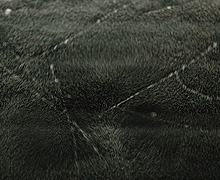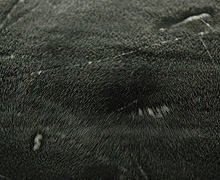polar: environmental observations in art
Initiated by Carsten Nicolai and Marko Peljhan, polar is being considered as a very special project. While the title refers to polarity and polar regions in its original meaning, polarm adds to this the earth's electromagnetic fields, radiation and magnetic poles as connectors between real and informational spaces. Another notion contained in the project title is the aim to explore the environment as an unknown polar zone via long-term observation of earth and data environments from an artistic point of view. In this project, macroscopic and microscopic invisible relationships hidden in the environment in which we live are exquisitely translated into a mix of images and sounds using cutting-edge media technology, to propose a new awareness and perception of the actuality of our ceaselessly transforming environment.
From polar (2000) to polarm (2010)
Ten years on from the polar installation in 2000, polarm raises the question how the mechanisms of no longer clearly definable human existence work in an age when the massive progress and penetration of information technology has brought along fluctuating environmental spheres. what does all the innovation and exploration of technology beyond our imagination aim to get closer to? this exhibition closes up on the phenomenon of “radiation” as a method of environmental exploration that is deeply rooted in physical nature. the installation landscape depicts the process of environmental creation from a viewpoint based on the earth's radiation and electromagnetic ecosystems.
Environmental spheres defined by radiation
Along with two cube-shaped structures placed symmetrically on the left and right side, there are objects/observatoria installed in the exhibition space: a set of geiger counters, a radiation generator, HF radio receivers and a cloud chamber (device for visualizing radiation). Various forms of exposure to radioactive rays - including the visitor's experience of the installation itself - detected with this setup trigger minute motion graphics and a wide frequency range of sounds, which ultimately cause a transformation of the entire exhibition space. Along with his or her own individual spatial experience of the installation, each visitor will face the exhibition's central question: Why are there two corresponding cubes placed in the room?
About the exhibition
Carsten Nicolai + Marko Peljhan “polarm [mirrored]”
New installation | Commissioned by YCAM
13 November (sat), 2010–6 February (sun), 2011 | 10:00–19:00
Yamaguchi Center for Arts and Media [YCAM] Studio A
Admission free
Closed on Tuesdays (the following day if Tuesday is a national holiday), 28 December–4 January
Curators: Yukiko Shikata (Guest curator), Kazunao Abe (YCAM)
![Carsten Nicolai + Marko Peljhan polar m [mirrored]](./c/img/logo.gif)


